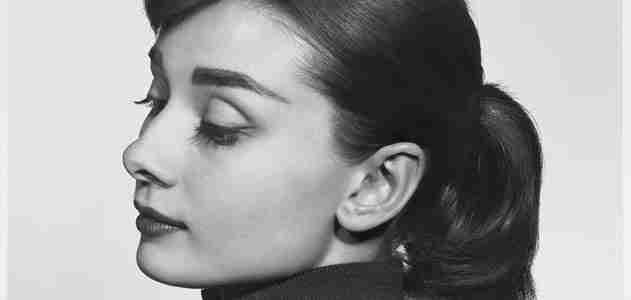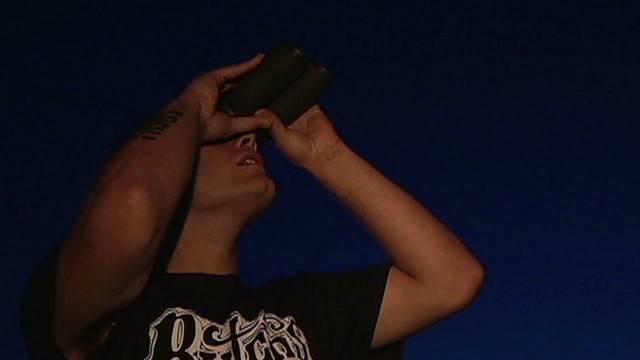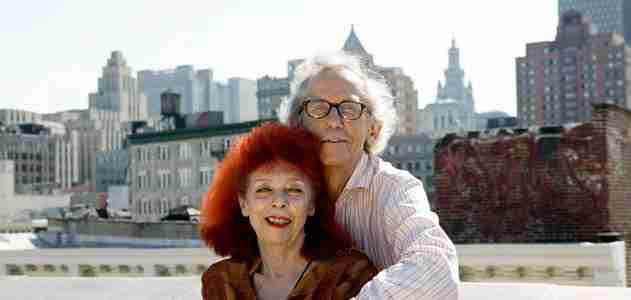From Castro to Warhol to Mother Teresa, He Photographed Them All

Photography fans know him as the man who shot Winston Churchill—shot him in 1941 in a back room at the Canadian Parliament, having plucked the great man's cigar from his mouth and been rewarded with a glower that made the cover of Life magazine. Said to be one of the most widely reproduced images in history, the portrait Yousuf Karsh made that day has also graced the postage stamps of seven countries. "You can even make a roaring lion stand still to be photographed," the statesman declared, whereupon he magnanimously permitted a second click of the shutter. The alternate take, long known only to the Churchill family, shows a twinkle in the lion's eye and the hint of a smile. Side by side, the images look as disconcertingly alike and unalike as Goya's Maja Desnuda , a nude on a couch, and his Maja Vestida , same couch, same pose, same woman, dressed.
Karsh took pictures for the ages. "How," he once asked an interviewer, "can you possibly photograph an Einstein or a Helen Keller, or Eleanor Roosevelt, a Hemingway or a Churchill, and not realize they are already part of history? If your photograph is the summation of these people's many accomplishments, besides showing their human side, then the historical point of view is fulfilled." And how might one image achieve all that?
By the time he died, in 2002 at the age of 93, Karsh was well known for having shot the better known. Once he had immortalized Churchill, getting "Karshed" became as requisite a perk of fame as an entry in Who's Who, for Mother Teresa no less than for a saintly George Bernard Shaw, the ravishing young Princess Elizabeth, a rascally Robert Frost, the cigarette-smoking André Malraux or Grace Kelly in profile. This year, to mark the centennial of Karsh's birth, leading institutions from coast to coast have mounted tributes. "Karsh 100: A Biography in Images" is on view through January 19 at the Museum of Fine Arts in Boston, the city where the photographer began his career.
Although its early chapters were shaped by terrors, his was largely a happy story. Born in Armenia in December 1908, Karsh landed in Halifax, Nova Scotia, by way of Beirut on New Year's Eve, 1925, sponsored by George Nakash of Sherbrooke, Quebec, an uncle he had never met. The atrocities and deprivations Karsh had suffered back home had not snuffed out his innate joie de vivre , and in time he would reunite his family in the New World. But first, there was the matter of carving out a livelihood. Nakash, a photographer, sent his nephew to Boston to apprentice with John H. Garo, a fellow Armenian in whose fashionable photo studio Brahmins mingled easily with artists. Garo gave Karsh a thorough grounding in the craft and art of studio portraiture, acquainted him with the works of Rembrandt and Velázquez, and included him in his social circle. "During those days of Prohibition," Karsh recalled in an autobiographical essay, "my extracurricular duties included acting as bartender for the hospitality that flowed, delivered to the studio in innocent-looking paint cans."
Under Garo, Karsh developed a lifelong addiction to the company of the great and glamorous. "Even as a young man," he said, "I was aware that these glorious afternoons and evenings in Garo's salon were my university. There I set my heart on photographing those men and women who leave their mark on the world." The studio Karsh opened in Ottawa in 1932 remained his professional address for six decades, but as he came into his own, his assignments and his passion turned him into a road warrior. "Any room in the world where I could set up my portable lights and camera—from Buckingham Palace to a Zulu kraal, from miniature Zen Buddhist temples in Japan to the splendid Renaissance chambers of the Vatican—would become my studio," he wrote. A single page of the memorial volume Karsh: A Biography in Images , captures our hero, incurably star-struck, in shots with Pope John Paul II and Jim Henson, creator of the Muppets, who are represented by Kermit.
In later life, Karsh took to publishing his albums with captions, brief or extensive, suggesting that each likeness was the record of some deep meeting of minds, whether it lasted half a minute or several days. He shot Al Hirschfeld, the theatrical caricaturist, and Hirschfeld drew him. But most of his great subjects saw him as a professional, not as a peer. "Unfortunately, I have no memory of the session," one subject of the late collection American Legends: Photographs and Commentary told me recently. "Or, to be more accurate, nothing memorable happened. Sorry."
The curator Jerry Fielder has written that Karsh "looked for, and found, the best in people," and that he "searched for the truth." But is the best the truth? Karsh shot Fidel Castro, with whom he swilled rum and Coke and swapped tales of Papa Hemingway. He shot the war criminal Alfred Krupp in a forgiving close-up. He tried in vain to shoot Stalin. Given the chance, he once told an interviewer, he would have photographed Hitler and Mussolini. He showed Charles Schulz grinning confidently at his drawing board, though the world now understands that the cartoonist's art had its roots in lifelong feelings of inadequacy and depression.
How does Karsh's work stand up? Critics have praised and mocked his mannerist obsession with sculpturally posed hands. (He liked props, too, and could use them well: a clear drafting triangle for Ludwig Mies van der Rohe, a miniature Rodin Thinker for Bill Clinton.) But today's connoisseurs are apt to exclude Karsh from the company of such mandarins as Richard Avedon, Irving Penn and Arnold Newman. Karsh held a reported 15,312 sittings during the life of his studio. For every Walt Disney or Carl Jung or Madame Chiang Kai-shek, there were hundreds of mere paying customers: college graduates, brides and bridegrooms, or corporate executives dropping in for the name-brand official portrait, expecting the ceremonial old master lighting and monumental poise that were Karsh's bread and butter.
If the object of serious portraiture is to lift the mask, Karsh seldom pulls it off. He excelled at hagiography and left psychological penetration mostly in the eye of the beholder. But taken in bulk, the likenesses of his men and women who left their mark on the world add up to the record of a life richly lived—his own. As autobiography, though never intended as such, they are most revealing.
Matthew Gurewitsch is an essayist and cultural critic based in New York City.


Robert Frank’s Curious Perspective

It's a safe bet that Robert Frank had never seen a denim-clad black couple on a Harley-Davidson before he came to the United States. Such a sight, like many others the 32-year-old Swiss émigré photographed in the mid-1950s for his quietly earthshaking book The Americans , would have been a novelty to a European, and indeed to many Americans at the time.
No doubt what caught Frank's eye was the chance to frame in a single composition three elements—blue jeans, people of color and a Harley—that still symbolize this country for much of the fascinated world.
Motorcycles and racial divisions are among the motifs that help to unify The Americans , along with jukeboxes, crosses, televisions, luncheonettes, cowboy hats, fedoras, cigars, highways, the old and the young, lonely offices, huge automobiles, run-down parks, blowhard politicians and American flags.
Frank observed all of these things during years of cross-country wanderings, funded partly by the Guggenheim Foundation. He had stated on his 1955 grant application that the project would be driven by "what one naturalized American finds to see in the United States that signifies the kind of civilization born here and spreading elsewhere."
Frank, who celebrates his 84th birthday this year and who long ago moved on to making films, videos and images that combine photographs with text, arrived on these shores in 1947 in search of artistic freedom. Trained as a photographer in Switzerland, he once said he knew after World War II that his future lay elsewhere: Switzerland "was too closed, too small for me."
Europeans who venture to America often focus their cameras on the gulf between our ideals and a grimmer reality, between rich and poor, black and white. Although such differences were all too visible in '50s America, Frank did not take cheap shots at his adopted land. He never acted the shocked foreigner or wide-eyed innocent.
Instead, his complicated feelings about the country were expressed so obliquely that the book remains as open to interpretation today as when it first appeared 50 years ago. Published in Paris in 1958 and New York the following year, it was denounced by many critics at the time as a sneak attack on Americans' general view of themselves as happy and harmonious. But as the book's downbeat style has been absorbed and widely imitated over the years, Frank's detractors have retreated.
Indianapolis, 1956 exemplifies the photographer's craftiness. The place and date are of little help in unraveling the picture's meaning. The photograph presents an unsmiling pair of motorcyclists at night in a Middle American city. They are staring intently at something between them and the photographer. A crowd of spectators gazes more randomly around the scene.
A more conventional photographer might have waited for the couple to look up at the camera. (Magazine editors like direct engagements between subject and reader.) Frank doesn't give us that satisfaction. He lets the bikers and the crowd float on parallel planes in a murky light. There is neither confrontation nor resolution. What the couple is staring at we are not permitted to know.
This photograph is nonetheless loaded with provocative symbolism. In the 1950s, motorcycling meant defiance of authority. In The Wild One (1953), among the first in a string of violent biker movies, a girl in a bar asks the leader of a fearful motorcycle gang, played by a leather-clad Marlon Brando, "What are you rebelling against?"
"Whaddya got?" he replies.
In the '50s, a photograph of black people on a Harley-Davidson even had political implications; it hinted at the failed promises that the civil rights movement would try to redress. It captures the nation's contradictions: the couple has yet to experience the freedom the motorcycle represents. You want rebellion? Here are some people with good reasons to defy authority.
John Szarkowski, the late director of the Museum of Modern Art's photography collection, wrote in 1989 that "the more distressing new quality in Frank's pictures was their equivocating indirection, their reluctance to state clearly and simply either their subject or their moral."
The ambiguity of Indianapolis, 1956 is underscored by its place as the next-to-last photograph in the book. As the penultimate image, we feel it must be important—a summarizing statement that gathers together the themes from the previous pages. But like so many of Frank's images, it is just another sharp-edged piece to a vast puzzle we may never quite put together.
Richard B. Woodward , a New York arts critic, often writes about photography.
A Brief History of Pierre L’Enfant and Washington, D.C. Plan Your Visit

Today's Washington, D.C. owes much of its unique design to Pierre Charles L'Enfant, who came to America from France to fight in the Revolutionary War and rose from obscurity to become a trusted city planner for George Washington. L'Enfant designed the city from scratch, envisioning a grand capital of wide avenues, public squares and inspiring buildings in what was then a district of hills, forests, marshes and plantations.
The centerpiece of L'Enfant's plan was a great "public walk." Today's National Mall is a wide, straight strip of grass and trees that stretches for two miles, from Capitol Hill to the Potomac River. Smithsonian museums flank both sides and war memorials are embedded among the famous monuments to Lincoln, Washington and Jefferson.
L'Enfant and the Capital Washington D.C. was established in 1790 when an act of Congress authorized a federal district along the Potomac River, a location offering an easy route to the western frontier (via the Potomac and Ohio River valleys) and conveniently situated between the northern and southern states.
President Washington chose an area of land measuring 100 square miles where the Eastern Branch (today's Anacostia River) met the Potomac just north of Mount Vernon, his Virginia home. The site already contained the lively port towns of Alexandria and Georgetown, but the new nation needed a federal center with space dedicated to government buildings.
Washington asked L'Enfant, by then an established architect, to survey the area and recommend locations for buildings and streets. The Frenchman arrived in Georgetown on a rainy night in March 1791 and immediately got to work. "He had this rolling landscape at the confluence of two great rivers," said Judy Scott Feldman, chairwoman of the National Coalition to Save Our Mall. "He essentially had a clean slate on which to design the city." Inspired by the topography, L'Enfant went beyond a simple survey and envisioned a city where important buildings would occupy strategic places based on changes in elevation and the contours of waterways.
While Thomas Jefferson had already sketched out a small and simple federal town, L'Enfant reported back to the president with a much more ambitious plan. For many, the thought of a metropolis rising out of a rural area seemed impractical for a fledgling nation, but L'Enfant won over an important ally. "Everything he said, a lot of people would have found it crazy back then, but Washington didn't," says L'Enfant biographer Scott Berg.
His design was based on European models translated to American ideals. "The entire city was built around the idea that every citizen was equally important," Berg says. "The Mall was designed as open to all comers, which would have been unheard of in France. It's a very sort of egalitarian idea."
L'Enfant placed Congress on a high point with a commanding view of the Potomac, instead of reserving the grandest spot for the leader's palace as was customary in Europe. Capitol Hill became the center of the city from which diagonal avenues named after the states radiated, cutting across a grid street system. These wide boulevards allowed for easy transportation across town and offered views of important buildings and common squares from great distances. Public squares and parks were evenly dispersed at intersections.


Pennsylvania Avenue stretched a mile west from the Capitol to the White House, and its use by officials ensured rapid development for the points in between. For the rural area to become a real city, L'Enfant knew it was crucial to incorporate planning strategies encouraging construction. But his refusal to compromise led to frequent clashes that eventually cost him his position.
City commissioners who were concerned with funding the project and appeasing the District's wealthy landowners didn't share L'Enfant's vision. The planner irked the commissioners when he demolished a powerful resident's house to make way for an important avenue and when he delayed producing a map for the sale of city lots (fearing real estate speculators would buy up land and leave the city vacant).
Eventually, the city's surveyor, Andrew Ellicott, produced an engraved map that provided details for lot sales. It was very similar to L'Enfant's plan (with practical changes suggested by officials), but the Frenchman got no credit for it. L'Enfant, now furious, resigned at the urging of Thomas Jefferson. When L'Enfant died in 1825 he had never received payment for his work on the capital and the city was still a backwater (due partly to L'Enfant's rejected development and funding proposals).
Through the 1800s to the McMillan Commission A century after L'Enfant conceived an elegant capital, Washington was still far from complete.
In the 1800s, cows grazed on the Mall, which was then an irregularly shaped, tree-covered park with winding paths. Trains passing through a railroad station on the Mall interrupted debate in Congress. Visitors ridiculed the city for its idealistic pretensions in a bumpkin setting and there was even talk after the Civil War of moving the capital to Philadelphia or the Midwest.
In 1901, the Senate formed the McMillan Commission, a team of architects and planners who updated the capital based largely on L'Enfant's original framework. They planned an extensive park system, and the Mall was cleared and straightened. Reclaimed land dredged from the river expanded the park to the west and south, making room for the Lincoln and Jefferson memorials. The Commission's work finally created the famous green center and plentiful monuments of today's Washington.
L'Enfant and Washington Today Some of L'Enfant's plans, including a huge waterfall cascading down Capitol Hill, were never realized. But the National Mall has been a great success, used for everything from picnics to protests. "The American people really took to the Mall in the 20th century and turned it into this great civic stage," Feldman says. "That was something that Pierre L'Enfant never envisioned ... a place for us to speak to our national leaders in the spotlight." It has become so popular that officials say it is "terribly overused," as evidenced by worn grass and bare patches of earth.
John Cogbill, chairman of the National Capital Planning Commission which oversees development in the city, says the Commission strives to fulfill L'Enfant's original vision while meeting the demands of a growing region. "We take [L'Enfant's plan] into account for virtually everything we do," he says. "I think he would be pleasantly surprised if he could see the city today. I don't think any city in the world can say that the plan has been followed so carefully as it has been in Washington."




Post a Comment